How to use Swagger2 and annotation explanation in SpringBoot project
1. Import Swagger coordinate dependencies
<dependency>
<groupId>io.springfox</groupId>
<artifactId>springfox-swagger2</artifactId>
<version>${swagger.version}</version>
</dependency><dependency>
<groupId>io.springfox</groupId>
<artifactId>springfox-swagger-ui</artifactId>
<version>${swagger.version}</version>
</dependency>The most commonly used version is 2.9.2
2. Add annotations to the spring startup class@ EnableSwagger2
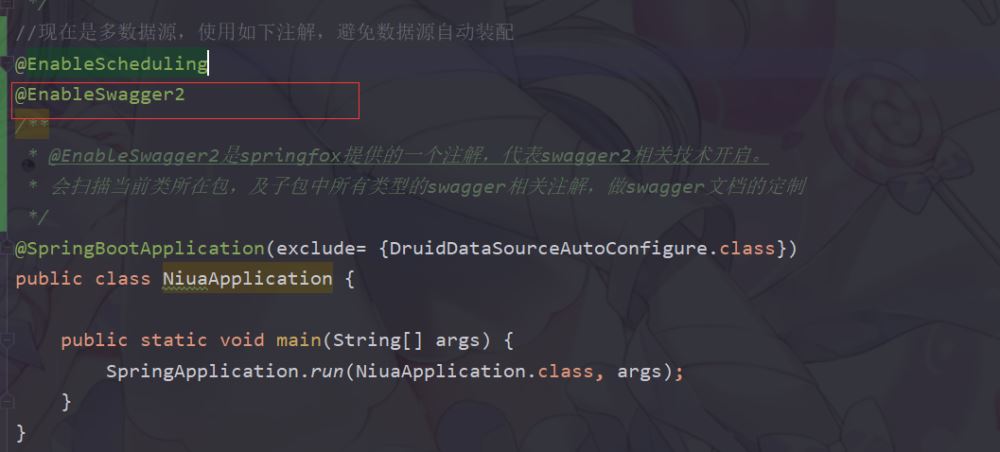
The @EnableSwagger2 annotation provided by springfox can enable swagger2 related technologies. The program will traverse all types in the package and its sub-packages of the current class to find annotations related to Swagger and customize the Swagger document
3. Start the project and view the swaggerui.html interface
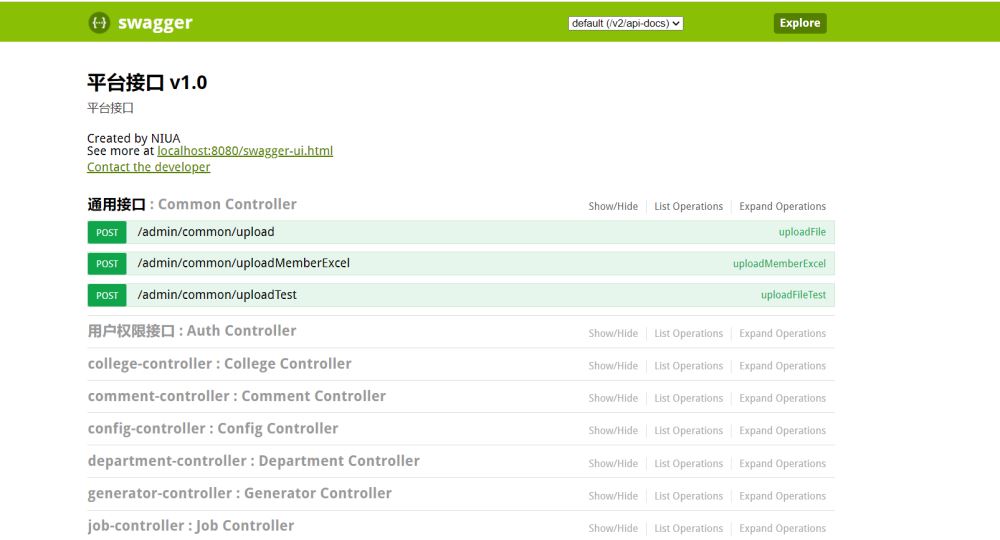
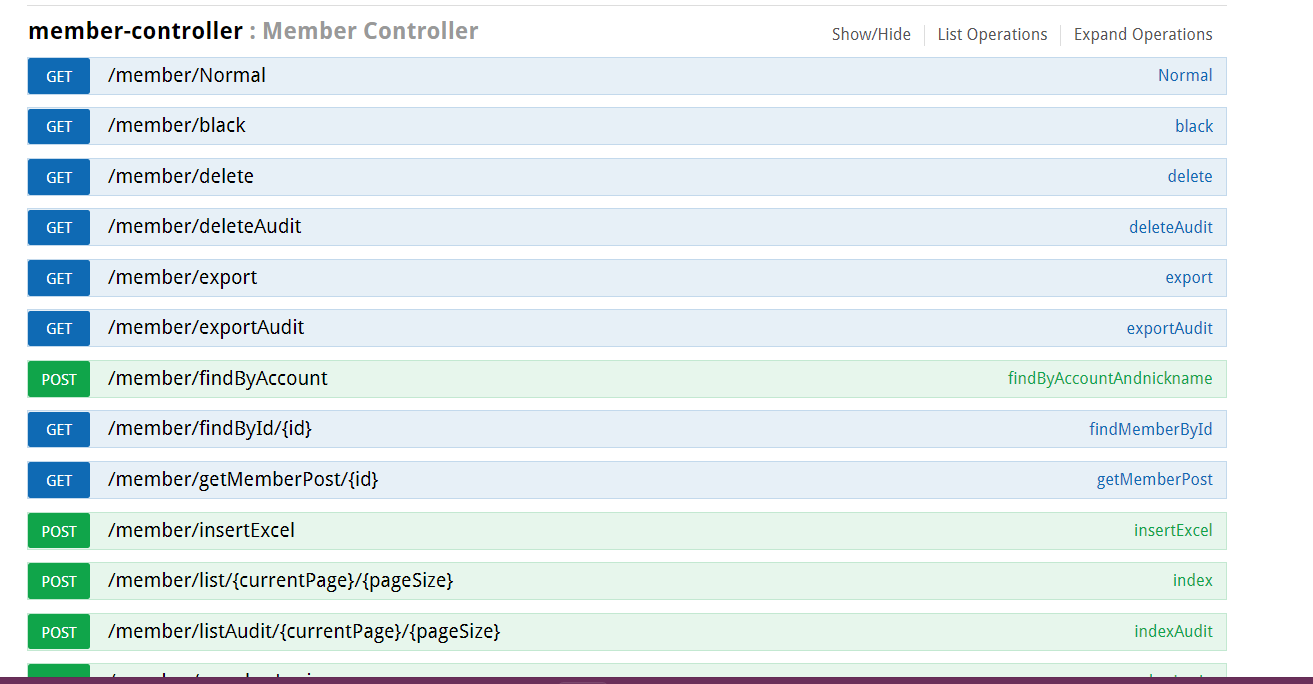
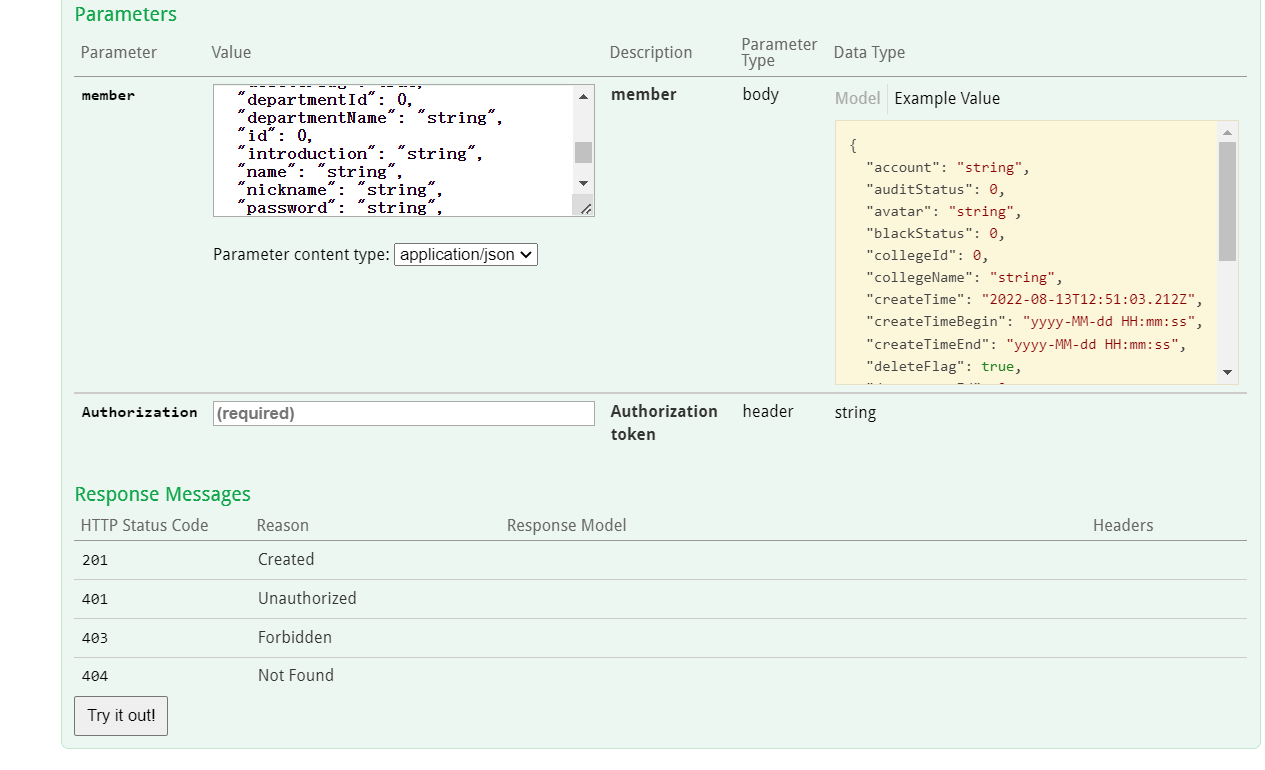
Click try it out to enter the corresponding parameters to view the returned results
Fourth, write the SwaggerConfig configuration file
@EnableSwagger2
@Configuration
public class SwaggerConfig {
@Autowired
private ApplicationContext applicationContext;
private Contact contact = new Contact("NIUA","localhost:8080/swagger-ui.html", "1053288979@qq.com");
@Bean
public Docket createRestApi() {
ServletContext servletContext = applicationContext.getBean(ServletContext.class);
return new Docket(DocumentationType.SWAGGER_2)
.select()
.apis(RequestHandlerSelectors.any())
.paths(Predicates.not(regex("/error.*")))
.build()
.apiInfo(apiInfo());
}
private ApiInfo apiInfo() {
return new ApiInfoBuilder()
.title("平台接口 v1.0")
.description("平台接口")
.contact(contact)
.version("1.0")
.build();
}
}@Bean
public Docket createRestApi() {
ServletContext servletContext = applicationContext.getBean(ServletContext.class);
return new Docket(DocumentationType.SWAGGER_2)
.select()
.apis(RequestHandlerSelectors.any())
.paths(Predicates.not(regex("/error.*")))
.build()
.apiInfo(apiInfo());
}Create a Docker type object and use spring container management. Docker is the global configuration object in Swagger
Use DocumentationType.SWAGGER_2 to specify the class object of Docket to determine which version is used
apiInfo(): Description information of the API document, the parameter is one ApiInfo class object, use the bulid() builder to create
private ApiInfo apiInfo() { return new ApiInfoBuilder() .title("平台接口 v1.0") .description("平台接口") .contact(contact) .version("1.0") .build(); }Copy after logincontact(): Configure the main content of the swagger document, which is also a class object. The class object can have up to three parameters, Publisher name, document publisher's website URL address (corporate website), document publisher's email address
private Contact contact = new Contact("NIUA","localhost:8080/swagger-ui.html", "1053288979@qq.com");Copy after logintitle(): Title description(): Description information.version(): Version information
corresponds to the following content
The method that returns ApiSelectorBuilder is select(), which is used to obtain the selector in Docker. Build selectors. For example, what packages should be scanned for annotations
apis(): followed by the (Predicate) rules under the RequestHandlerSelectors class, which stipulates the annotations of those packages to be scanned. The default is the annotations under the startup class and its sub-packages
There are several static methods under the RequestHandlerSelectors class (three examples)
basePackage(): Fill in the specific address of the package name later, and the annotations of the modified package and its sub-packages will be scanned
docker.apis(RequestHandlerSelectors.basePackage("com.xxx"))Copy after loginany(): Generate API documentation for any interface
none(): Do not generate interface documentation for any interface
path(): Use regular expressions, constraint generation The path address of the Api document, followed by the filtered (passed) path
//过滤掉admin路径下的所有页面 .paths(Predicates.not(PathSelectors.regex("/admin/.*"))) //过滤掉所有error或error.*页面 .paths(Predicates.not(PathSelectors.regex("/error.*"))) //所有error或error.*页面或者admin路径下的所有页面都支持(or任意满足起一就通过) .paths(Predicates.or(PathSelectors.regex("/error.*"),PathSelectors.regex("/admin/.*")))Copy after login
5: Swagger supports custom annotations
is not mentioned here, you can search it yourself if you are interested (leave a Location, will be used later)
Six: Swagger2 common annotations
@Api (commonly used)
Function : @Api is a class Note on. Control the content of the interface information generated by the entire class
Attributes:
tags: The name of the class. If there are multiple values, which means there are multiple copies (aliases) available, the SwaggerUI view will show which controllers have access to the menu through which
description: description, obsolete
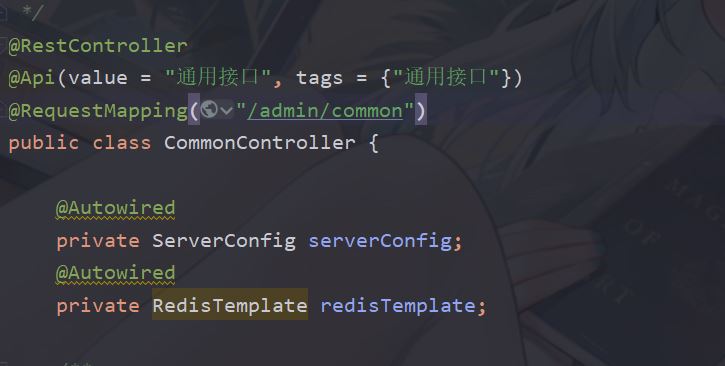

@ApiOperation
Function: @ApiOperation is an annotation on the method, describing the relevant information of the method
Attributes:
value:Method description function
notes:Method notes (expand description)



@ApiParm
Function: @ApiParm is a method parameter annotation. Describe the parameter
Attribute:
name:Parameter name
value:Describe the function of the parameter
required:The value is of boolean type , indicating whether the parameter is a necessary parameter, the default is false


@ApiIgnore
作用:@ApiParm是方法或者参数的注解。忽略注解的方法或者参数,不生成帮助文档
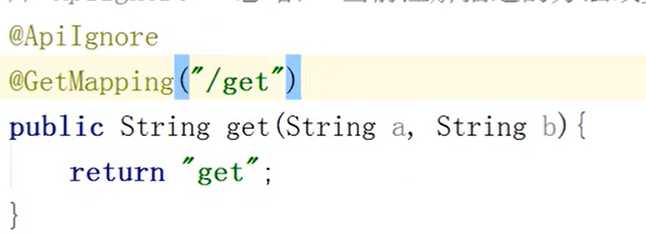
@ApiImplicitParam(常用)
作用:@ApiParm是作用于类上方法,用来描述方法参数的注解。
属性:
name:参数名称,和方法的参数一致
value:参数具体描述
required:值为boolean类型,表示该参数是否为必要参数,默认为false
paramType:参数类型
paramType="字符串" paramType = "header"Copy after logindataType:数据类型
dataType = "string" //字符串数据 dataType = "键值对"Copy after login

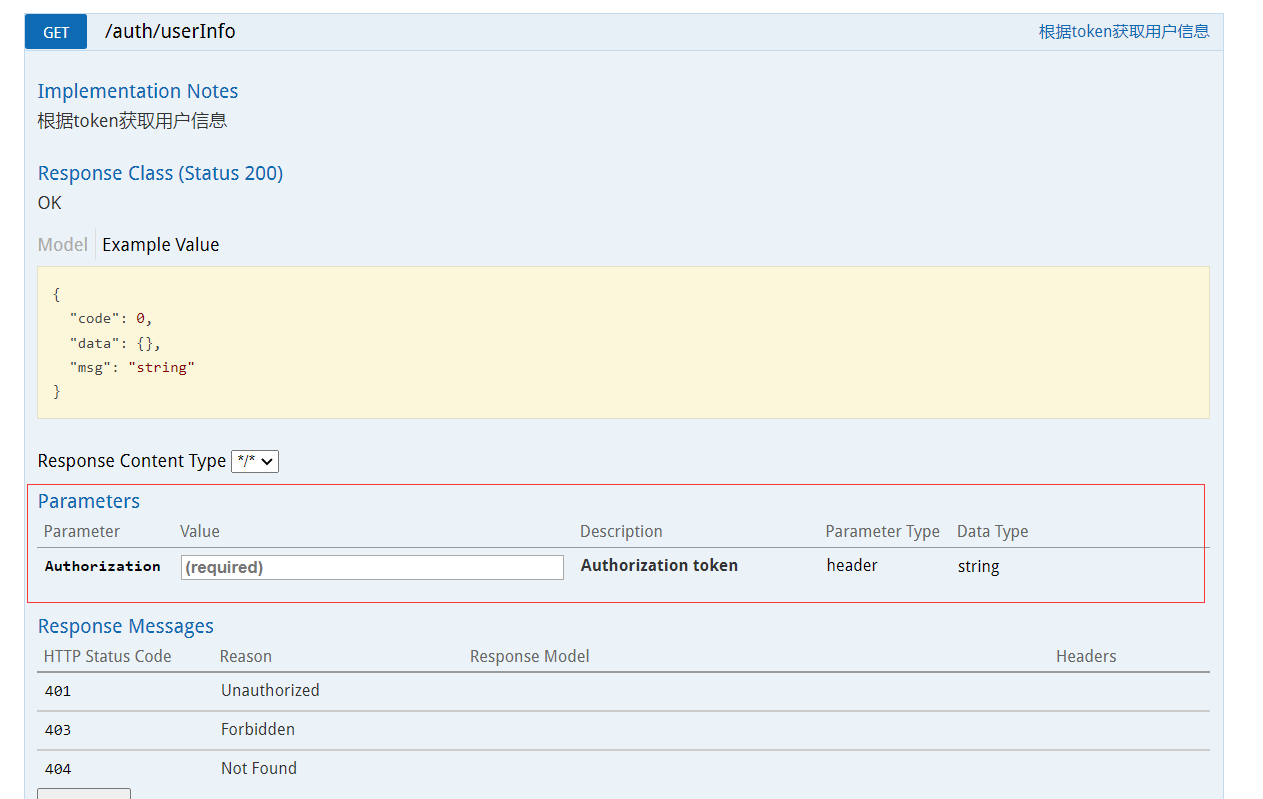
@ApiImplicitParams
后面跟@ApiImplicitParam的集合,一般用于多个参数的描述

@ApiImplicitParams({@ApiImplicitParam(name = "Authorization", value = "Authorization token", required = true, dataType = "string", paramType = "header")})@ApiModel(常用)
作用:@ApiModel是作用于实体类上,描述一个实体类型,整个实体类型如果成为任何一个生成api帮助文档的返回对象的时候,该注解被解析
属性:
value:实体类名称
description:实体类描述
@ApiModelProperty(常用)
作用:@ApiModel是作用于实体类的属性上,描述实体类属性
属性:
value:实体属性描述
name:实体类属性名字,与属性名一致

The above is the detailed content of How to use Swagger2 and annotation explanation in SpringBoot project. For more information, please follow other related articles on the PHP Chinese website!

Hot AI Tools

Undresser.AI Undress
AI-powered app for creating realistic nude photos

AI Clothes Remover
Online AI tool for removing clothes from photos.

Undress AI Tool
Undress images for free

Clothoff.io
AI clothes remover

AI Hentai Generator
Generate AI Hentai for free.

Hot Article

Hot Tools

Notepad++7.3.1
Easy-to-use and free code editor

SublimeText3 Chinese version
Chinese version, very easy to use

Zend Studio 13.0.1
Powerful PHP integrated development environment

Dreamweaver CS6
Visual web development tools

SublimeText3 Mac version
God-level code editing software (SublimeText3)

Hot Topics
 How Springboot integrates Jasypt to implement configuration file encryption
Jun 01, 2023 am 08:55 AM
How Springboot integrates Jasypt to implement configuration file encryption
Jun 01, 2023 am 08:55 AM
Introduction to Jasypt Jasypt is a java library that allows a developer to add basic encryption functionality to his/her project with minimal effort and does not require a deep understanding of how encryption works. High security for one-way and two-way encryption. , standards-based encryption technology. Encrypt passwords, text, numbers, binaries... Suitable for integration into Spring-based applications, open API, for use with any JCE provider... Add the following dependency: com.github.ulisesbocchiojasypt-spring-boot-starter2. 1.1Jasypt benefits protect our system security. Even if the code is leaked, the data source can be guaranteed.
 How to use Redis to implement distributed locks in SpringBoot
Jun 03, 2023 am 08:16 AM
How to use Redis to implement distributed locks in SpringBoot
Jun 03, 2023 am 08:16 AM
1. Redis implements distributed lock principle and why distributed locks are needed. Before talking about distributed locks, it is necessary to explain why distributed locks are needed. The opposite of distributed locks is stand-alone locks. When we write multi-threaded programs, we avoid data problems caused by operating a shared variable at the same time. We usually use a lock to mutually exclude the shared variables to ensure the correctness of the shared variables. Its scope of use is in the same process. If there are multiple processes that need to operate a shared resource at the same time, how can they be mutually exclusive? Today's business applications are usually microservice architecture, which also means that one application will deploy multiple processes. If multiple processes need to modify the same row of records in MySQL, in order to avoid dirty data caused by out-of-order operations, distribution needs to be introduced at this time. The style is locked. Want to achieve points
 How SpringBoot integrates Redisson to implement delay queue
May 30, 2023 pm 02:40 PM
How SpringBoot integrates Redisson to implement delay queue
May 30, 2023 pm 02:40 PM
Usage scenario 1. The order was placed successfully but the payment was not made within 30 minutes. The payment timed out and the order was automatically canceled. 2. The order was signed and no evaluation was conducted for 7 days after signing. If the order times out and is not evaluated, the system defaults to a positive rating. 3. The order is placed successfully. If the merchant does not receive the order for 5 minutes, the order is cancelled. 4. The delivery times out, and push SMS reminder... For scenarios with long delays and low real-time performance, we can Use task scheduling to perform regular polling processing. For example: xxl-job Today we will pick
 How to solve the problem that springboot cannot access the file after reading it into a jar package
Jun 03, 2023 pm 04:38 PM
How to solve the problem that springboot cannot access the file after reading it into a jar package
Jun 03, 2023 pm 04:38 PM
Springboot reads the file, but cannot access the latest development after packaging it into a jar package. There is a situation where springboot cannot read the file after packaging it into a jar package. The reason is that after packaging, the virtual path of the file is invalid and can only be accessed through the stream. Read. The file is under resources publicvoidtest(){Listnames=newArrayList();InputStreamReaderread=null;try{ClassPathResourceresource=newClassPathResource("name.txt");Input
 Comparison and difference analysis between SpringBoot and SpringMVC
Dec 29, 2023 am 11:02 AM
Comparison and difference analysis between SpringBoot and SpringMVC
Dec 29, 2023 am 11:02 AM
SpringBoot and SpringMVC are both commonly used frameworks in Java development, but there are some obvious differences between them. This article will explore the features and uses of these two frameworks and compare their differences. First, let's learn about SpringBoot. SpringBoot was developed by the Pivotal team to simplify the creation and deployment of applications based on the Spring framework. It provides a fast, lightweight way to build stand-alone, executable
 How SpringBoot customizes Redis to implement cache serialization
Jun 03, 2023 am 11:32 AM
How SpringBoot customizes Redis to implement cache serialization
Jun 03, 2023 am 11:32 AM
1. Customize RedisTemplate1.1, RedisAPI default serialization mechanism. The API-based Redis cache implementation uses the RedisTemplate template for data caching operations. Here, open the RedisTemplate class and view the source code information of the class. publicclassRedisTemplateextendsRedisAccessorimplementsRedisOperations, BeanClassLoaderAware{//Declare key, Various serialization methods of value, the initial value is empty @NullableprivateRedisSe
 How to implement Springboot+Mybatis-plus without using SQL statements to add multiple tables
Jun 02, 2023 am 11:07 AM
How to implement Springboot+Mybatis-plus without using SQL statements to add multiple tables
Jun 02, 2023 am 11:07 AM
When Springboot+Mybatis-plus does not use SQL statements to perform multi-table adding operations, the problems I encountered are decomposed by simulating thinking in the test environment: Create a BrandDTO object with parameters to simulate passing parameters to the background. We all know that it is extremely difficult to perform multi-table operations in Mybatis-plus. If you do not use tools such as Mybatis-plus-join, you can only configure the corresponding Mapper.xml file and configure The smelly and long ResultMap, and then write the corresponding sql statement. Although this method seems cumbersome, it is highly flexible and allows us to
 How to get the value in application.yml in springboot
Jun 03, 2023 pm 06:43 PM
How to get the value in application.yml in springboot
Jun 03, 2023 pm 06:43 PM
In projects, some configuration information is often needed. This information may have different configurations in the test environment and the production environment, and may need to be modified later based on actual business conditions. We cannot hard-code these configurations in the code. It is best to write them in the configuration file. For example, you can write this information in the application.yml file. So, how to get or use this address in the code? There are 2 methods. Method 1: We can get the value corresponding to the key in the configuration file (application.yml) through the ${key} annotated with @Value. This method is suitable for situations where there are relatively few microservices. Method 2: In actual projects, When business is complicated, logic







